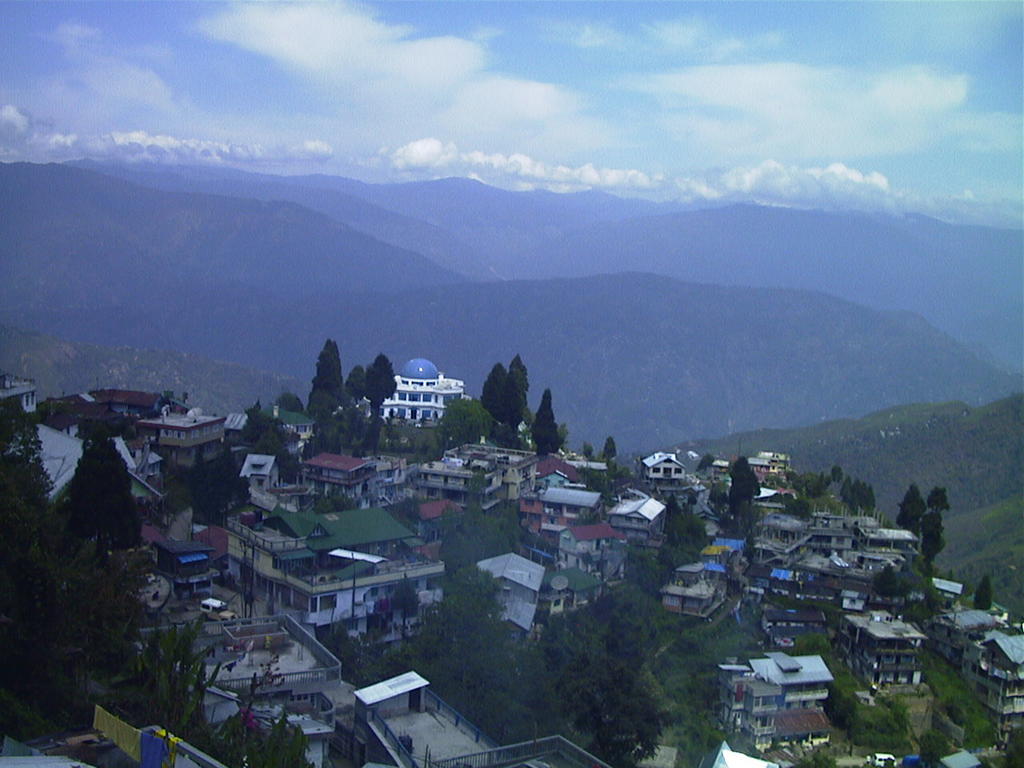
Its name synonymous for many with tea, beautiful Darjeeling (pop. 132,000) is located in the far northeastern state of West Bengal, in the lap of the soaring Kanchan Junga mountains (lesser Himalayas). Founded in the early 19th century by the British starting with an army depot and sanitorium (thanks to its pleasant climate, more temperate than the regions below), the "Queen of the Hills" subsequently saw the establishment of plantations growing the black tea which became one of the world's most popular. Amazingly blessed with emerald greenery all year round, it's especially striking in the spring when the red and white rhododendrons bloom all over, and In my opinion its climate, blissful ambiance, pretty Victorian as well as neo-Tudor and Gothic architecture, and smiling people makes this India's most friendly and welcoming hill station for holidaymakers, especially nature lovers. Here are some highlights of a visit to Darjeeling.
 Mjanich
Mjanich
The Toy Train
A major attraction here is the charming Darjeeling Himalayan Railway, dubbed the Toy Train because of its diminutive size and narrow gauge tracks. Built in the 1880s, it runs 88 kilometres (55 miles) between Darjeeling and New Jalpaiguri down near sea level (as well as up to the village of Ghum, with India's highest railway station), The DHR delights visitors with scenic rides drawn by vintage steam locomotives (other regular service uses diesel locomotives), and has been classified as a UNESCO World Heritage Site along with two other Indian mountain railways.
 Anilbharadwaj125
Anilbharadwaj125
Tea Plantations
About a quarter of India's tea production comes from Darjeeling, and plantations still blanket the hillsides all across the area. Several (such as Happy Valley Tea Estate, Glenburn Tea Estate, Tumsong Chiabari Tea Estate, and Singtom Tea Resort) welcome visitors with a variety of amenities, including accommodations, tea tastings, field and factory tours, even the chance to pick a few tea leaves in the field yourself!
Joshua Singh
Rich Culture and Traditions
Darjeeling is very rich in regional culture and traditions, with the majority Nepali Gorkhas living side by side with other ethicities including Lepchas, Tibetans, Bengalis, Biharis, Sherpas, and Marwaris. You'll see this reflected in local art, music, food, and especially ethnic/religious festivals held throughout the year, such as Diwali in TK; Losar Buddhist new year in January/February; Tihar in TK. Additionally, the secular Darjeeling Carnival celebrates the area's musical and cultural heritage for ten days each winter.
 Summit Surai
Summit Surai
Irresistible Eating
Speaking of food, in addition to offering plenty of the Indian fare you'll find across the subcontinent, Darjeeling is also fantastic for local ethnic delicacies, especially momos, steamed dumplings with meat and/or vegetables served with light veg soup and spicy tomato chutney. Other local delicacies include thukpa noodles; soft chhurpi cheese; fermented foods such as gundruk, kinema, and sinki; the fermented millet drink tongba (above),

Darjeeling Zoo
Founded in 1958, the 27.3-hectare (67½-acre) Padmaja Naidu Himalayan Zoological Park specializes in mountain fauna, and has been successfully breeding endangered species such as the snow leopard, the Himalayan wolf, and the red panda in captivity.
Simon Matzinger
Himalayan Mountaineering Institute
Here in the shadow of the Himalayas, mountain-climbing enthusiasts can take courses at this 65-year-old academy whether they're rank beginners or established climbers looking to up their games.
Comments